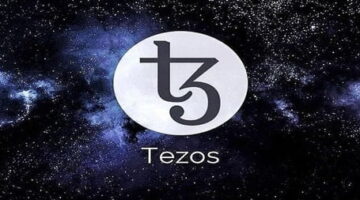Muir Glacier Hard Fork

Ethereum Block Times Reduced By 25% Following Muir Glacier Hard Fork
According to recent statistics, Ethereum block time is said to have dropped by 25 percent after the Muir Glacier hard fork.
Data reported on ETH block explorer “Etherscan” shows that from Jan. 1 to Jan. 4, 2020, the daily average block time on the blockchain decreased from 17.16 seconds to 12.96. This translates to a 24.48% shorter block time.
The ETH blockchain has seen a lot of activity in the past month. After two hard forks and numerous difficulties, the project is once again making headway with reduced block times that will increase ETH supply in circulation.
In fact, Ethereum‘s supply is likely to grow by about 25%, as the effects of the time bomb delay are already quite noticeable. The quantity of mined ETH after the time bomb rose from 10,000 ETH to 12,000 ETH, with specialists expecting the issuance to settle at about 13,500 ETH.
While decreased block times are generally considered to be a good thing, this will also put the inflation rate at around 5% a year.
Time Bomb Delay Could Return in 2021
Once the inflation rate sores in the coming months, experts believe that it will finally stabilize, at least until September 2021, as this is when the time bomb should once again return.
While the Muir Glacier hard fork brought the time bomb’s third delay, the bomb is still not completely out of the game, as it will reportedly return in about 20 months, according to ETH developers.
However, full Proof of Stake (PoS) might launch before this happens, while Proof of Work (PoW) will be entirely discarded.
Fortunately, the inflation rate of 5%, if it comes to that, will also be discarded with the introduction of PoS, which will further stabilize the ETH platform and bring inflation down to around 0.22%.
Ethereum Blockchain has a long way to go
Ethereum’s switch from PoW to PoS is complex, and it cannot be hurried. Nonetheless, ETH developers are confident that they will reach their objective in the long run, reducing inflation while increasing scalability.
However, it is worth noting that Ethereum was supposed to switch to PoS several years ago. In fact, the time bomb is no glitch, but a tool which is supposed to provide an incentive for developers to increase the Ethereum development speed.
Relevant news

DeFi Project, Polychain-Backed Paradigm Labs, Shuts Down For Lack Of Product-Market Fit
Disappointing moment for the DeFi sector as the ambitious DeFi liquidity project, Paradigm labs shut…

Understanding the Tezos Ecosystem in Depth
Whenever the topic of blockchain and cryptocurrencies comes up, the word mining is bound to…

IOTA Co-Founders Could Engage In Legal Battle Over Allegations of $7.7M embezzlement
On February 3, 2020, IOTA co-founder Sergey Invancheglo threatened legal action against fellow co-founder David…

Uganda’s Dunamiscoins Directors Charged Over $2.7 Crypto Scam
On January 8, 2020, Ugandan news sources reported that a pair of suspects were charged…

Telegram Dodge a Bullet as US Court Declined SEC’s Motion for Them to Disclose Bank Records
On January 6th, 2020, the US District Court for the Southern District of New York…

VeChain buyback address compromised for 1.1 billion VET
VeChain Foundation Announcement: December 13, 8:27pm (UTC+8), the VeChain Foundation buyback address was compromised. Approximately…
